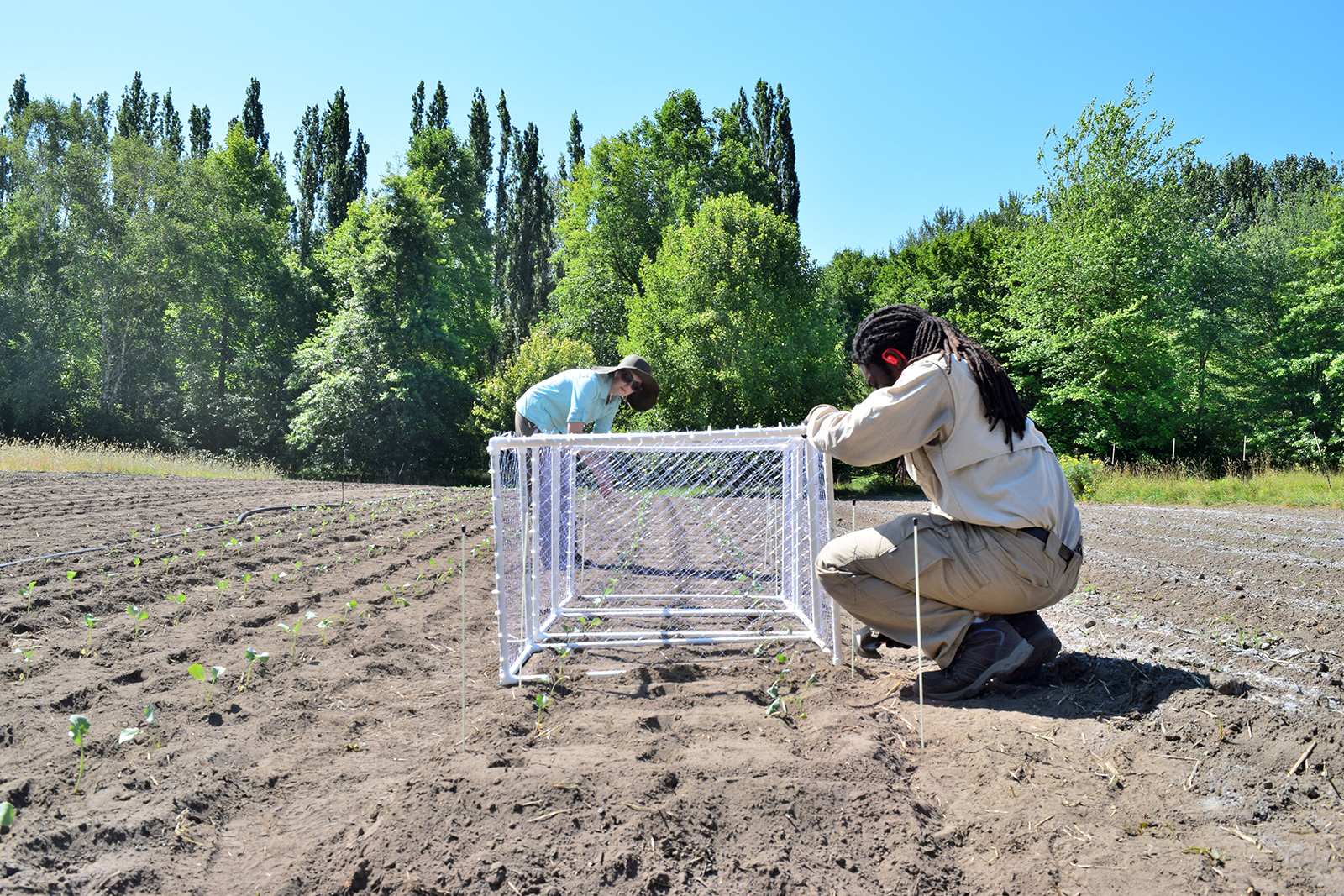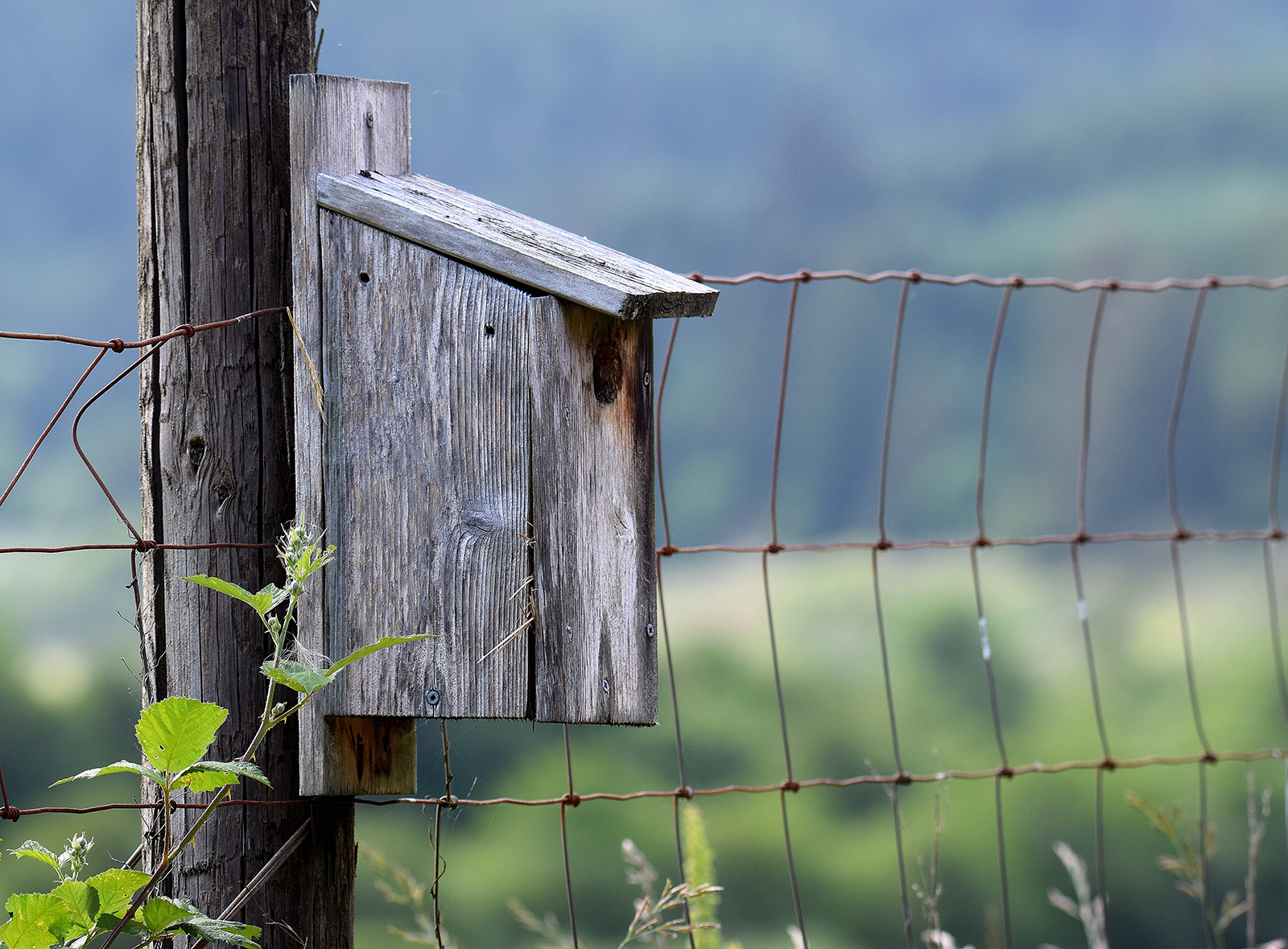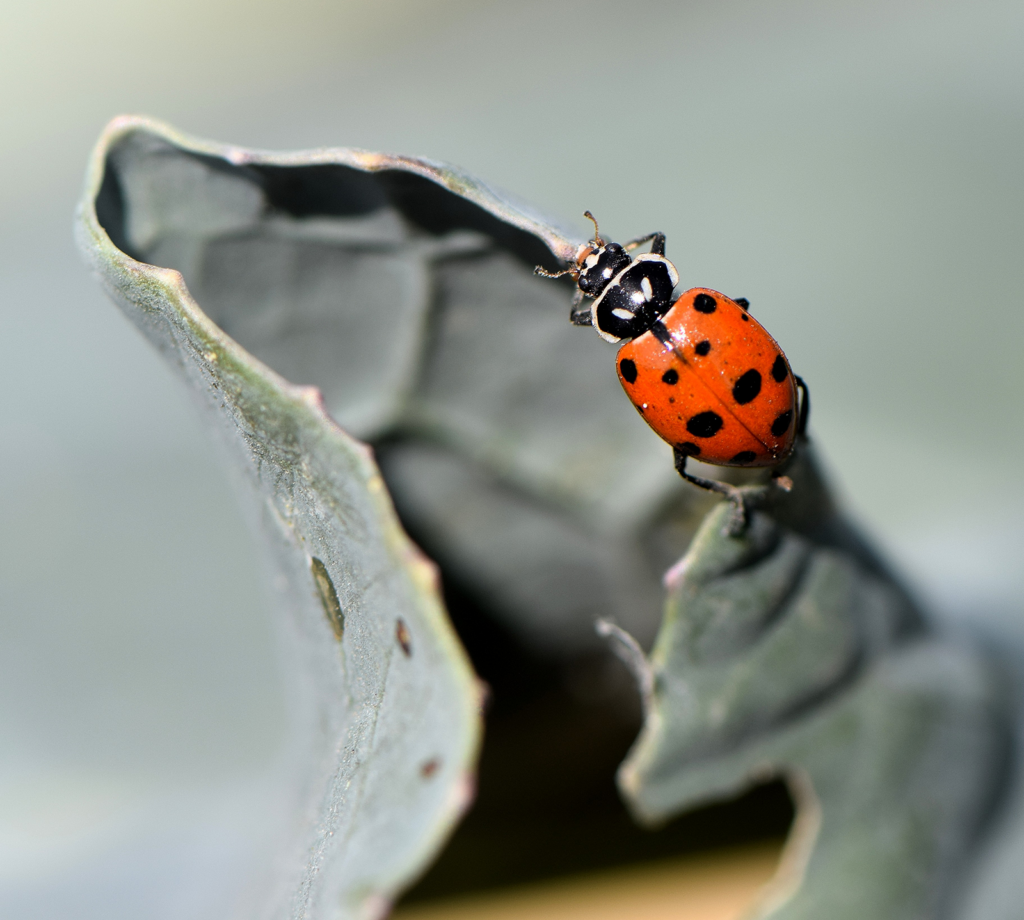By Olivia M. Smith
Linked paper: Bird predation and landscape context shape arthropod communities on broccoli by Joseph M. Taylor, Olivia M. Smith, Max Edworthy, Christina M. Kennedy, Christopher E. Latimer, Jeb P. Owen, Erin E. Wilson-Rankin, and William E. Snyder. Ornithological Applications.
If you’re reading this, you probably already know that birds are in decline across North America, in part due to intensive agriculture. Thus, conservation of birds on farms is a key part of conservation planning. This may be easiest when farmers, who often operate in tight financial margins, incorporate birds as allies in their arthropod pest management plans. Birds consume many insects, and if birds are consuming pest insects, then birds and farmers can benefit each other. However, consumption of insects doesn’t necessarily mean that birds are benefitting crop production; birds consume both harmful insects and the beneficial arthropods that consume harmful insects. The overall interactions between birds, pest insects, and beneficial arthropods determine the overall impact of birds on crop yields.
Indeed, a growing body of research has found that birds are sometimes beneficial to crop production, sometimes harmful, and sometimes neutral. One mediator of the overall inconsistent effects of birds (and arthropods) on pest control is the landscape context of a farm, which is a jargon term meaning the land cover in a larger area (e.g., a 1 km radius circle around the field center). For example, a farm that is surrounded by forest might expect very different impacts of birds on crop production compared to a farm in the middle of a city.
Over the last six years, we have worked to figure out how to best manage farms and landscapes to support birds that also support crop production. Our research was no easy task. The field research team lived in vans during field seasons, driving up and down the U.S. West Coast for the summer months and sometimes into the fall. The field work was a massive undertaking, and we additionally supervised about a half dozen undergraduates in extracting DNA from avian fecal samples for molecular diet analysis, then coordinated sample testing across several universities over several years. We hope that our intensive efforts will be useful to farmers and conservationists alike.
From this work, we’ve previously published a number of papers looking at how to promote bird biodiversity, mitigate potential food safety risks from birds, and quantified assumed pest control benefits from birds. In our paper just out in Ornithological Applications, we took the next step by experimentally examining the impacts of birds on broccoli pests, leaf damage, and yields. Through this research, we can better understand the birds’ actual impacts on production by considering their potentially harmful actions of consuming beneficial arthropods.
For our study, we set up bird exclosures across 13 farms in the U.S. states of Oregon and Washington. We experimentally excluded birds from some broccoli plants and compared the arthropods (both pests and arthropods that consume pests), leaf damage, and yields between plants that birds did and did not have access to. We designed our experiment to occur on farms that were in natural (e.g., surrounded by forest) and anthropogenic (e.g., urban or farmland) areas.

We paired our experimental results with DNA barcoding of avian feces collected from five species of birds that we commonly observed foraging on broccoli during our prior bird surveys and during our experiment.
Overall, we found small impacts of birds on arthropods on broccoli. Our experiment suggested that birds might actually increase pest aphids, potentially by consuming predatory arthropods that are more effective at controlling pests than are birds. The impacts of birds on aphids didn’t translate into notable differences in broccoli damage nor yields. However, the landscape context did impact arthropod communities and leaf damage, suggesting that farms in more natural landscapes may have fewer broccoli pest issues.
Finally, through our DNA barcoding, we saw some differences between bird species in the types of arthropods they consumed, suggesting that some bird species may be more (or less) beneficial than others for crop pest control.
Altogether, our findings suggest that growers may not experience large benefits from birds on arthropod pest control for all crops. Additional financial incentives may be needed to encourage farmers to promote birds on farms (e.g., installing nest boxes). For example, farmers can enroll in private-sector or NGO-led eco-certification programs (e.g., Audubon Certified Grazed on BirdFriendly Land and Smithsonian Bird Friendly coffee) that enable them to sell their products at a price premium. Altogether, greater implementation of bird-friendly practices in agricultural systems are urgently needed to halt the rapid declines of birds, and greater incentives are likely needed for farmers to do so.




